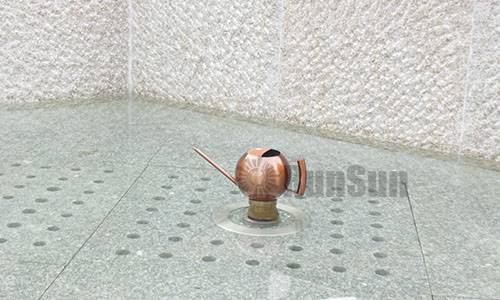

The most basic watering device is a spray can. This is a simple bucket with a nozzle on one side and usually a handle at the top. So how do you choose between different types of watering cans?
Spouts are used to direct water to specific plants and areas of the earth. For certain delicate jobs, a spray can is still the most useful tool.
It is easier and neater to use a spray can care for houseplants than to bring a hose into the house. And, spray cans are often ideal for plants that need a specific or measured amount of water. Accuracy is difficult to achieve when using larger, more powerful watering devices.
Different types of spray cans
1. Choice of material
The two most basic types of spray cans are metal or plastic. Plastic tends to be cheaper and is usually less durable, but these spray cans are lightweight and easy to handle.
Metal cans will last longer if they are galvanized and rust-resistant. These may be heavier, but their durability means you can carry around a trustworthy spray can for the entire life of your garden.
There is no right or wrong choice, but one thing to consider is draining. Plastic cans can contaminate your water, and this should be considered if you are watering food. Otherwise, any of these sprinklers for your garden should do just as good a job.
2. Sprinklers
As they say, “A rose is not just a rose.” Sprinklers (often called roses or rose knots) are one of the more important features of a sprinkler. If you don’t have an adjustable spray garland, you need to know when to use a sprinkler with a specific spray nozzle.
Some spray pots for gardens have fine sprays for a gentle sprinkling of water. These are useful for delicate plants and newly issued specimens. The rose at the end of the spout should be removed so you can also deliver a quick dose of water. This is also useful if the nozzle is clogged, so it can be removed.
Adjustable garlands are a wonder. You can do gentle showers or more intense watering, but the wreath allows the water to be distributed evenly over the soil surface to reach the roots.
Using a spray can in a different way mean keeping smaller, longer nozzles and larger ergonomic types with adjustable rosettes. This way, you can cover the base and have a can that fits any type of need.
3. Nozzles and necks
Who knew these were important items in the world of watering? Several types of spray cans are available with not only unique body styles but also with different diameter and length necks and many convenient nozzle designs.
Each is designed for different plant needs. The style you choose depends on the size of the plant and the method needed to deliver the water. Some tips on when to use a spray can with certain design features help you determine which equipment to purchase.
4. Size and handle placement
Size is another issue. If you are using a spray can for light work, such as gently watering under the leaves of African violets, you will need a small one.
For larger jobs in the greenhouse or garden, choose one that can be lifted comfortably, but doesn’t have to travel to the hose bib as often.
It may seem odd to worry about the length and size of a watering neck, but consider the different types of plants to be irrigated.
Longer necks can also be used in hanging baskets and other hard-to-reach locations. Shorter necks are adequate for most overhead watering needs and provide stability without carrying too many balls.
Handle placement may also need to be considered. Pick up the can and see if you can pour water. Different types of spray cans will handle in unique ways.
For older gardeners or children who can easily stabilize the jar with both hands, a two-handle model may be useful. It is important to know what type of plants and situations you will be using in order to determine the specifications that will meet your needs.
5. Other watering equipment
Sprinklers are also commonly used as watering equipment. They can be connected to a hose or set up using other water systems.
They direct water in a fan or circular motion and can water plants and land dozens of feet from the base.
Sprinklers are useful watering devices because once installed, sprinklers can cover large areas on their own. In addition, they can be set on a timer to supply water at regular intervals.
Many farms are equipped with very advanced watering equipment. The watering equipment used on farms is usually mobile and mounted on rails or wheels so that it can cover the entire field by itself.
This equipment can save farmers a lot of work time. In addition, it can help preserve crops during unusually hot and dry seasons.
Just as there are unique watering devices for farms, there are unique watering devices for greenhouses. Some greenhouse plants require only regular watering, while others need moist air conditions.
For these types of plants, there are watering devices that provide a regular mist of water, and when combined with the use of heaters, they create the ideal moist conditions that plants need to flourish.

